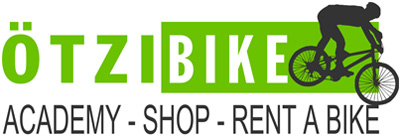Singletrail scale
The Single Trail Scale (STS) is divided into three difficulty classes: easy, medium and difficult, which are indicated by the usual colour codes for ski slopes.
These difficulty classes are based on the riding ability of an average biker with a state-of-the-art mountain bike.
Six relatively easily distinguishable levels of difficulty (S grades) from S0 to S5 are used for the actual classification and more precise differentiation of the trails (and difficulty classes).
For an average biker, the lower end of the scale can be taken as ‘without difficulties’ and the upper end equated with ‘unrideable’.
The difficulty class Easy includes grades S0 and S1, Medium is defined by S2 and Difficult includes all higher S grades.
The STS is open-ended limited to the technical difficulty of a path running flat or downhill. However, the entire range of S grades is most commonly only offered by single trails, which is why we are talking primarily about these.
The single trail is classified exclusively on the basis of path characteristics that are as objective as possible under ideal ambient conditions such as ample daylight and dry ground. The classification is therefore independent of factors that cannot be influenced by the riding technique, or subjective and variable factors such as:
the degree of danger (risk of falling),
the weather (wet, wind, fog and snow),
the light conditions or speed.
When orienting according to S grades, it should therefore be noted that the technical difficulty of a trail can shift markedly upwards, for example, as a result of poor weather conditions or faster speeds.
The S grades
S 0
S0 describes a single trail that has no particular difficulties. These are mostly smooth forest and meadow paths on a natural surface with a good grip, or compact gravel. Steps, rocks or roots are not to be expected. The gradient of the path is slight to moderate, the curves are not tight. [»more]
S 1
On a trail marked S1 you have to expect smaller obstacles such as flat roots and small stones. Very often you’ll find that the odd gulley or erosion damage is the reason for the increased degree of difficulty, the ground may not always be firm. The maximum gradient is 40%. Hairpin turns are not to be expected. [»more]
S 2
On an S2 trail, you have to reckon with larger roots and stones. The ground is often loose. Steps and flat stairs are to be expected. There are often narrow curves and the gradient can be up to 70% in places.
S 3
Blocked single trails with many larger boulders and/or root passages belong to category S3. There are often high steps, hairpin turns and tricky traverses. Sections for relaxed rolling are rare. Slippery ground and loose scree are also frequently to be expected; a gradient of over 70% is not uncommon.
S 4
S4 describes very steep and heavily blocked single trails with large boulders and/or demanding root passages, often with loose scree in between. Extremely steep slopes, narrow hairpin turns and steps on which the cogs unavoidably touch, occur frequently in the S4 category.
S 5
The S5 is characterised by blocked terrain with counter climbs, scree slopes and landslides, extremely tight hairpin bends, multiple obstacles, such as fallen trees, come one after the other – frequently when it is extremely steep. There is very little to no coasting or breaking time. At times, obstacles may need to be tackled in combination.
Important:
Not all factors have to be fulfilled to assign a passage to a certain S-degree. A single trail can have different degrees of difficulty in different passages or sections. The route is described as S2 with two S3 passages, for example.
